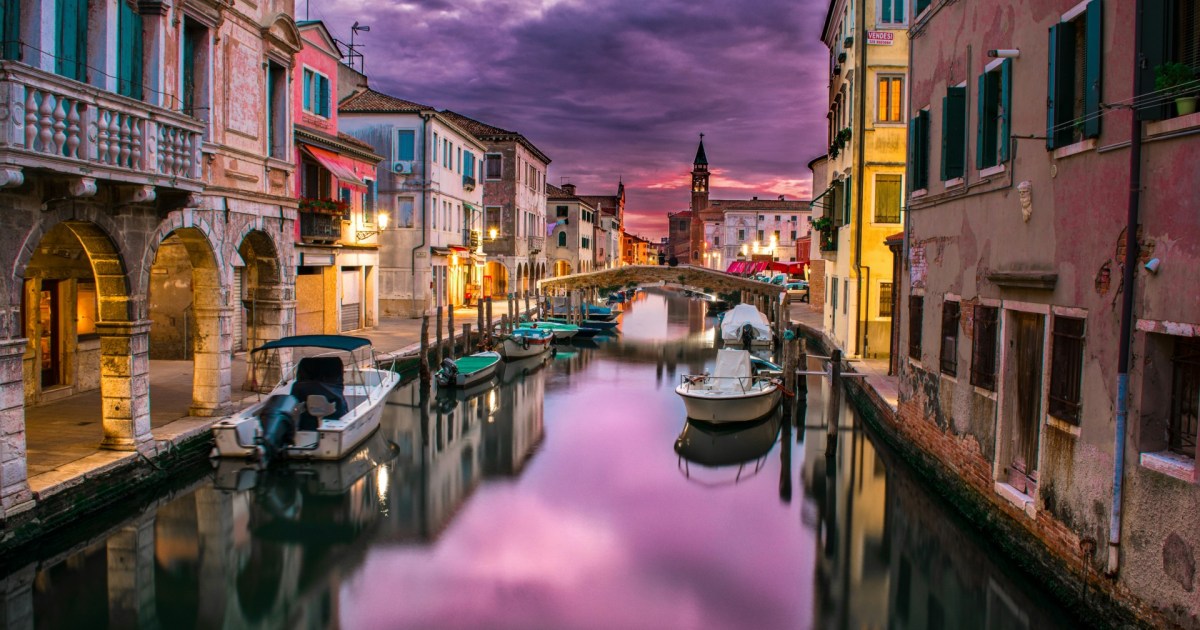Nearly everyone has Italy on their bucket list, and who could blame them? With pasta on every corner and history that dates back thousands of years, it’s one of the most magical destinations on Earth. I’m still dreaming of lounging on the beach along the Amalfi Coast with an Aperol spritz in hand.
But while it’s fairly easy to get around, traveling through Italy isn’t quite as simple as hopping on a train and heading to the next charming town. There are plenty of cultural quirks and unexpected costs that can trip you up (like getting charged extra just for sitting with your espresso instead of sipping it at the bar). That’s why I reached out to seasoned travel experts for their best Italy travel tips, from what not to do at a local café to a few key phrases you should know.
Whether you’re heading to the big names like Rome, Florence, and Venice or scouting out lesser-known places to visit in Italy, these pro-backed insights will help you travel smarter and smoother.
One of the best Italy travel tips is to dive into the local coffee scene. Alicia and Nate, travel creators and founders of The Passport Couple, say, “Coffee in Italy is quick, cheap, and usually consumed standing at the bar. Don’t expect flavored lattes or iced drinks. You order an espresso or cappuccino (but only before 11 am and not a latte because that’s just milk), and enjoy the ritual like a local.”
Skip the fancy coffee orders and embrace the speedy, no-frills tradition. It’s part of the authentic Italian experience!
One important travel tip to keep in mind is the infamous “sitting tax.” Sveva Marcangeli, founder of travel website Svadore, explains, “Anytime you take a seat, even if it’s just for an espresso or gelato, you will be charged a ‘coperto,’ or cover or table service charge, of about 1-2 euros per person. You can’t avoid it for dinner, but you can for something as simple as a coffee or a panino. Just eat it standing at the bar or take it to go like a true Italian.” So, save some euros and keep moving.
Picking up a few basic Italian phrases before your trip is one of the best Italy travel tips around. Isabella Biava, travel blogger and founder of Boundlessroads.com, says, “Learning a few basic Italian phrases really makes a difference. Locals appreciate the effort, and it opens doors to more authentic experiences.”
Try greeting shopkeepers with a friendly “Buongiorno” (good morning) or “Buonasera” (good evening) when you enter, and say “Grazie” (thank you) when you leave. Other handy phrases include “Per favore” (please), “Scusi” (excuse me), and “Dov’è il bagno?” (Where is the bathroom?).
To tip or not to tip? Like most of Europe, tipping isn’t expected in Italy. It’s not required, but if you receive exceptionally great service, rounding up the bill or leaving 5-10% is always appreciated.
So don’t stress about it. Focus on enjoying your meal and the experience, and tip if you’re very impressed.
Of course, you want to see everything, but fitting it all into just a few days isn’t realistic, and trying to do so might leave you feeling rushed and stressed. Do your research ahead of time and pick what matters most to you.
Striking a balance between sightseeing and soaking up Italy’s slower pace will make your trip way more enjoyable. Don’t forget to save time for a coffee in a piazza or a leisurely stroll along one of the country’s many quaint shopping streets. Sometimes wandering without a destination in mind will provide you with the most authentic experiences.
“First-time visitors to Italy can underestimate just how much time they’ll be spending on their feet,” says Kanika Puri, Chief Customer Officer at Fast Cover Travel Insurance. “With both large cities and small towns highly walkable, wandering the age-old streets is a fascinating way to explore the country. Plus, traffic can be seriously bad in many places, so it’s often easier to walk or use public transport.”
If you’re planning your itinerary, keep in mind that cities in Italy are best enjoyed on foot, and comfortable shoes are a must. (And bring your fitness tracker, so you can feel accomplished when you see your daily steps.)
When planning your evenings, remember that enjoying authentic Italian dishes means embracing the local dining schedule.
“Most Italian restaurants don’t even open until 7:30 p.m.,” says Betsy Ball, Co-Founder and Partner at Euro Travel Coach. “If you want to eat earlier, your best bet is a wine bar with a light menu – think cheese and charcuterie boards, bruschetta plates, and simple pasta dishes. These spots usually open by 6:00 p.m., and it’s perfectly fine to bring the kids. Keep in mind, the further south you go in Italy, the later people eat.”
Planning ahead is one of the smartest Italy travel tips to make the most of your trip without the stress. This is especially important if you’re visiting popular destinations like Rome and Venice during busy times, such as the Jubilee year this year.
Denyse Pantaleo, Rome Tours Manager for Walks & Devour Tours, explains: “Popular attractions like the Colosseum and Vatican Museums sell out fast. It’s so important to book your tickets ahead of time. I recommend looking for skip-the-line tours or early/after-hour access to beat the crowds and avoid time wasted queuing.”
UNESCO has officially added 26 new sites to its World Heritage List for 2025, recognizing places of exceptional cultural and natural importance around the globe. The latest additions were announced during the organization’s 47th annual session held July 6-16 in Paris, bringing the total number of World Heritage Sites to 1,248 across more than 170 countries.
This year, UNESCO considered 32 nominations and approved 21 cultural, four natural, and one mixed site for inscription.
Spain is reeling from a double dose of natural disasters this week, with mass flooding in the northeast and a rare earthquake in the south raising concerns for travelers with upcoming trips.
Torrential rains and heavy winds over the weekend turned streets into rivers across Catalonia, with 155mm of rainfall reported in Barcelona alone on Saturday. The severe weather triggered evacuations, including a hospital southwest of the city, and left two people missing.
If you’ve ever hesitated to put your suitcase on a hotel bed, you might have good reason to be cautious. A recent study by InsureandGo reveals that your trusty travel bag could be a hotspot for harmful bacteria. The filthiest spot? The wheels, which harbor nearly 58 times more bacteria than a public toilet seat.
To uncover just how filthy our luggage gets on the go, a microbiologist swabbed both hard- and soft-shell suitcases at a busy airport train station. They tested two key spots on each bag, the wheels and the base, to see how much grime we might be dragging into our hotel rooms and homes.
The Essential Guide for MenThe Manual is simple — we show men how to live a life that is more engaged. As our name implies, we offer a suite of expert guides on a wide range of topics, including fashion, food, drink, travel, and grooming. We don’t boss you around; we’re simply here to bring authenticity and understanding to all that enriches our lives as men on a daily basis.




